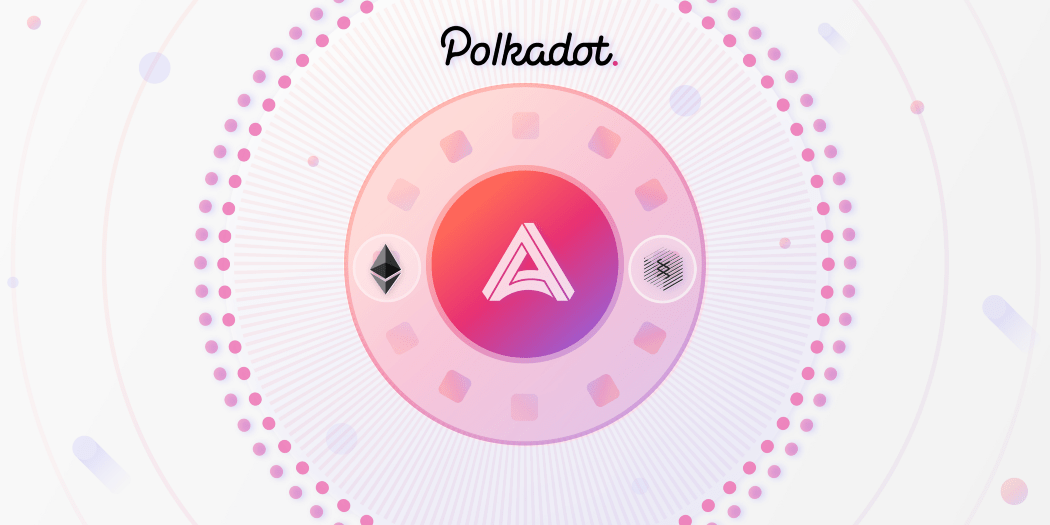Are you tired of Ethereum’s high gas fees and network congestion? Imagine a world where you can leverage the power of Ethereum’s smart contracts with the speed and scalability of Polkadot. Well, that future is closer than you think! Acala, a leading parachain on Polkadot, just dropped a game-changer: the Acala EVM. This isn’t just another update; it’s a major leap towards connecting the two biggest blockchain ecosystems, Ethereum and Polkadot, and it’s all happening in the exciting world of DeFi.
What’s the Buzz About Acala EVM?
Think of the Acala EVM as a translator, a bridge, or even a universal adapter for the blockchain world. It’s essentially an Ethereum Virtual Machine built on Polkadot’s robust Substrate framework. This clever piece of tech allows developers who are comfortable coding in Solidity (Ethereum’s main language) to build applications that tap into the unique benefits of Polkadot. We’re talking speed, scalability, and a whole new playground for DeFi innovation!
Decoding the Acala EVM: What’s in it for You?
The Acala EVM is all about full-stack composability. Sounds technical? Let’s break it down. It means developers can mix and match the best of both worlds:
- Native Polkadot Tokens & Ethereum ERC-20 Tokens: Imagine using DOT, aUSD, ACA, renBTC, and your favorite ERC-20 tokens all in one place. Acala EVM makes it happen!
- DeFi Powerhouse: This cross-chain magic unlocks a universe of DeFi possibilities, turning Acala into a central hub. Think about:
- Stablecoin Creation: Easily mint and manage stablecoins.
- DEX Domination: Supercharge decentralized exchanges.
- Synthetic Asset Symphony: Trade synthetic assets like never before.
- Lending & Borrowing Bonanza: Expand lending and borrowing options.
- Recurring Payment Revolution: Set up automated, recurring payments smoothly.
- Pay with Any Token: Forget being restricted to specific tokens for transaction fees! Acala lets you pay with almost any token you hold, offering unmatched flexibility.
DeFi Dreams: On-Chain Scheduling and Killer Gas Fees?
Ever wished you could automate your DeFi strategies? Acala EVM brings on-chain scheduling to the table. This is huge for DeFi because it enables:
- Automated Transactions: Set up transactions to execute automatically based on pre-defined conditions. Think of it as autopilot for your DeFi activities!
But wait, there’s more! Acala EVM tackles one of Ethereum’s biggest pain points:
- Micro Gas Fees: Say goodbye to those exorbitant Ethereum gas fees! Acala offers significantly lower transaction costs, making DeFi more accessible to everyone.
- Oracle Contracts: Reliable price feeds are crucial for DeFi. Acala EVM provides robust oracle contracts to ensure accurate and dependable data for all your DeFi actions.
Acala’s goal is clear: to provide a faster and more affordable DeFi experience compared to Ethereum’s often congested network. Ethereum, while powerful, has struggled with scalability, leading to those dreaded high gas fees. Acala aims to be the solution.
Polkadot’s Big Play: Web3 and DeFi Expansion
Acala’s EVM launch is a key part of Polkadot’s grand vision: to become the go-to blockchain for Web3 development. Polkadot’s architecture is designed for speed and efficiency, enabling instant transactions. This is a stark contrast to Ethereum, which, despite its upgrades, still faces scalability challenges.
Polkadot vs. Ethereum: By the Numbers
Let’s look at the current landscape:
| Feature | Polkadot | Ethereum |
|---|---|---|
| Transactions per Day (approx.) | 10,000-20,000 (via Polkascan) | Over 1 million |
| DeFi Ecosystem | Growing rapidly | Dominant, hosts most major protocols |
| Developer Community | Expanding | Massive and well-established |
| Active Users | Growing | Over 1 million |
While Polkadot boasts impressive transaction efficiency, Ethereum’s sheer size, its massive developer community, and its huge user base (over 1 million active participants!) are significant hurdles for Polkadot to overcome. But Acala EVM is a strategic move to bridge this gap.
Acala EVM: The Competitive Edge?
Acala isn’t just copying Ethereum; they’re enhancing it. By seamlessly integrating with the Ethereum ecosystem and building in native cross-chain functionalities, Acala is making a strong case for developers seeking alternatives to Ethereum’s limitations. Here’s how Acala is positioning itself as a serious contender:
- Ethereum Asset Support: Imagine using your UNI tokens and other Ethereum-based assets directly within Acala’s DeFi services. Yes, that’s the plan!
- Speed & Cost Advantage: Faster and cheaper transactions compared to Ethereum? Definitely a major draw for users and developers alike.
- Polkadot-Ethereum Harmony: Effortless interaction between Polkadot and Ethereum tokens. This breaks down the silos and creates a more unified blockchain experience.
Acala is essentially building a bridge, not just between blockchains, but between communities, making DeFi more interconnected and accessible.
The Takeaway: Acala EVM and the Future of DeFi
Acala’s launch of its EVM is a pivotal moment for Polkadot’s DeFi ambitions. It’s about making blockchains work together, not in isolation. By boosting interoperability and offering a powerful alternative for developers, Acala is pushing the boundaries of what’s possible in DeFi.
While Ethereum’s dominance is undeniable, Acala’s focus on user-friendly features, cross-chain compatibility, and cost-effectiveness could very well make it the go-to platform for the next wave of DeFi innovation. Keep an eye on Acala – they’re not just building on Polkadot; they’re building the future of DeFi.
Want to stay ahead of the curve in the fast-paced world of crypto? Dive into our latest news articles to discover more groundbreaking projects and trends shaping the digital asset landscape.
Disclaimer: The information provided is not trading advice, Bitcoinworld.co.in holds no liability for any investments made based on the information provided on this page. We strongly recommend independent research and/or consultation with a qualified professional before making any investment decisions.


